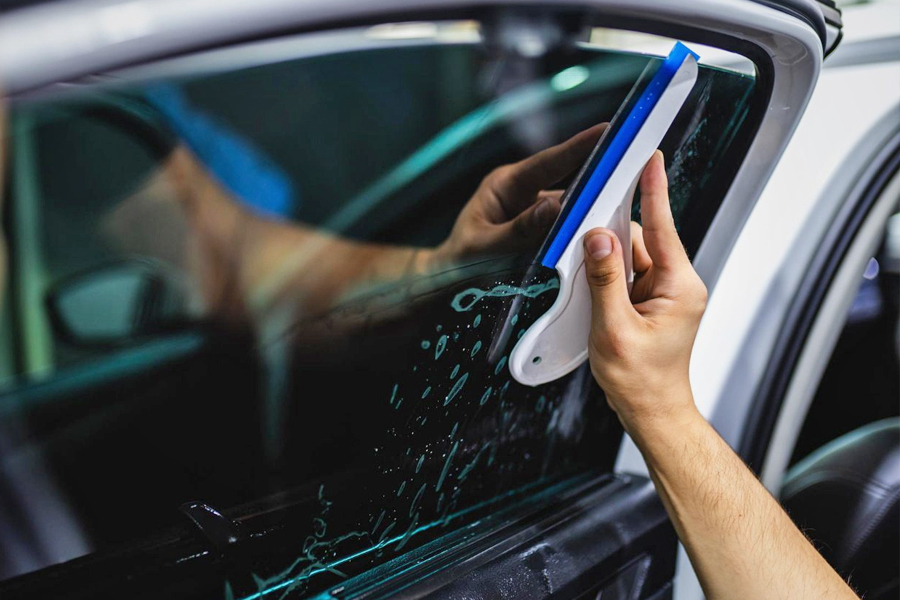Car Window Tinting: Boost Your Cars and truck's Style and Personal privacy
Car Window Tinting: Boost Your Cars and truck's Style and Personal privacy
Blog Article
Window Tinting Rules and Guidelines: What You Required to Know Before Tinting Your Automobile
Before continuing with home window tinting for your vehicle, it is vital to acquaint on your own with the diverse regulations and guidelines that govern this practice throughout various states. These guidelines dictate the acceptable levels of tint darkness, commonly measured by noticeable light transmission (VLT) percents, and consist of details specifications for front windshields aimed at making certain roadway safety and security.
Overview of Window Tinting Laws
Window tinting legislations are often subject to variation throughout various jurisdictions, showing local guidelines and safety factors to consider. These regulations determine the permitted levels of tint darkness and reflectiveness on vehicle windows, making certain that drivers preserve appropriate visibility while likewise protecting against hazardous UV rays and heat.
A lot of policies categorize window tinting based on the Visible Light Transmission (VLT) portion, which shows the amount of light that can pass with the window. Usually, lower VLT portions represent darker colors. Laws often distinguish between the front, side, and rear windows, with stricter limitations used to the front windscreen to improve security for both the motorist and various other roadway customers.
Conformity with window tinting regulations is important, as infractions can result in fines, mandatory elimination of the color, and prospective boosts in insurance costs. It is essential for car proprietors to familiarize themselves with local regulations before continuing with window tinting installments.
State-by-State Color Rules
Comprehending the specific window tinting laws in each state is crucial for automobile proprietors seeking to abide by the legislation. Each state in the united state has actually established its very own collection of guidelines governing window tinting, which can differ considerably. These guidelines commonly dictate the permitted degrees of color darkness, the kinds of home windows that can be tinted, and any medical exceptions that might use.
As an example, states like California have stringent limitations on color darkness for front home windows, while others, such as New Mexico, may enable darker colors. In addition, particular states mandate specific visibility percents for numerous home windows, including the windshield, front side windows, and back windows. It is vital for car owners to familiarize themselves with their state's regulations to avoid possible penalties or fines.
In addition, some states might require a certification sticker label to be positioned on tinted windows, indicating conformity with state laws. Failing to stick to these laws not just takes the chance of lawful consequences but can additionally affect safety and presence while driving. Vehicle owners need to conduct thorough research or speak with regional authorities to guarantee full understanding and conformity with state-by-state tint laws.
Allowed Color Kinds and degrees
Many vehicle proprietors may be amazed to find out that enabled color degrees and kinds differ extensively throughout various states. Each state has developed its very own policies regarding the acceptable darkness and reflectivity of window color, usually measured by Visible Light Transmission (VLT) percents. VLT refers to the quantity of light that can travel through the tinted home windows; therefore, a lower percentage suggests a darker color.

Furthermore, the sorts of color products permitted can differ, with some states prohibiting metal or mirror-like surfaces. It is crucial for automobile proprietors to familiarize themselves with their state's details laws to guarantee conformity. Non-compliance can result in fines, compulsory elimination of the color, or other legal effects, making it essential to understand these regulations prior to proceeding with setup.
Medical Exemptions for Tinting
While not all states offer allocations for clinical exemptions relating to window tinting, those that do acknowledge the requirement for details people to boost exposure and comfort because of clinical problems. Numerous clinical conditions, such as lupus, skin cancer cells, and particular eye conditions, can provide individuals specifically conscious sunshine. Subsequently, these people might need darker colors to shield themselves from unsafe UV rays and glare.

It is essential to note that despite having a clinical exception, there might still be constraints on the degree of color permitted. Compliance with state laws ensures that people are both protected and within lawful limitations. Those thinking about clinical exemptions need to call their regional Department of Electric motor Autos or equivalent authority to comprehend the procedures and demands necessary to get an exemption successfully.
Charges for Non-Compliance
Failing to adhere to window tinting legislations can bring about substantial penalties, which vary by state. Police are equipped to read this post here provide citations for automobiles that do not comply with the defined tinting laws. These penalties commonly consist of fines, which can vary from moderate amounts to numerous hundred dollars, depending upon the seriousness of the offense and the state concerned.
In some jurisdictions, repeated offenses may result in rising fines or added penalties, such as necessary court appearances. Moreover, non-compliance might require the elimination of illegal tinting, often at the owner's cost. In extreme instances, regular wrongdoers might encounter suspension of their car enrollment until conformity is achieved.
Additionally, insurance policy effects may arise from obtaining several citations for window tint violations. Insurers might check out such infractions as a sign of riskier habits, potentially causing raised costs or difficulty in coverage.
To avoid these charges, it is essential for lorry owners to familiarize themselves with their neighborhood home window tinting legislations and ensure that their automobile complies (Window Tinting). This positive method not only prevents lawful ramifications however additionally advertises roadway safety
Final Thought

Many guidelines classify window tinting based on the Visible Light Transmission (VLT) portion, which indicates the quantity of light that click over here now can pass via the window. Conformity with home window tinting laws is critical, as offenses can result in penalties, obligatory elimination of the tint, and potential increases in insurance coverage premiums.Understanding the certain window tinting guidelines in each state is vital for vehicle proprietors seeking to abide with the law. These guidelines commonly determine the permitted degrees of color darkness, the kinds of home windows that can be tinted, and any type of medical exemptions that may use.
For circumstances, states like The golden state have rigorous constraints on color darkness for front windows, while read this article others, such as New Mexico, might enable darker tints.
Report this page